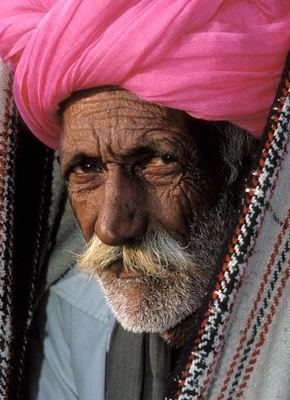It is all too easy to be misunderstood, and to misunderstand others, in an unfamiliar environment. When we travel we inevitably carry with us the expectations, standards and other norms of our own culture and background, but these may not be applicable or appropriate elsewhere in the world. First experiences of a previously unknown location may therefore produce a degree of culture shock. The local religion, food, standards of dress and behaviour, and reaction to being photographed may all be quite different.
 The first steps towards cultural sensitivity and integration can be made by being open minded, positive and flexible, and maintaining one’s self confidence and sense of humour. A good initial assumption is that, given their prevailing circumstances, local people do things in the best way possible. A corollary of this is that if something seems strange you may have a lot to learn. Whilst this is simplistic and may not always be the case, an approach based upon this frame of mind is likely to be beneficial in gaining the confidence of others. Communication, curiosity, and tolerance of difference, ambiguity and failure are also essential element of adjustment.
The first steps towards cultural sensitivity and integration can be made by being open minded, positive and flexible, and maintaining one’s self confidence and sense of humour. A good initial assumption is that, given their prevailing circumstances, local people do things in the best way possible. A corollary of this is that if something seems strange you may have a lot to learn. Whilst this is simplistic and may not always be the case, an approach based upon this frame of mind is likely to be beneficial in gaining the confidence of others. Communication, curiosity, and tolerance of difference, ambiguity and failure are also essential element of adjustment.
The ability to approach complete strangers in a different culture probably has to be acquired through experience, but some people certainly find it easier than others. The key is to smile, as this is a human gesture understood worldwide. Other priorities are to show genuine interest in an open, respectful and friendly manner, and to demonstrate humility and a sense of humour. Don't barge in with your expensive camera and tell people how smart you are and how wonderful everything is at home. Acceptance will be gained more quickly by making simple conversation, asking tactful questions and learning from local wisdom. The opening of an effective communication channel is a step towards integration and hence dealing with your own culture shock.
Above all consider carefully how you are perceived by local people. Their social protocols and taboos are as obvious to them as they are strange to you, so respect for them will be noticed and appreciated. In general it is wise to conform to cultural restrictions, local sensitivities and norms, and maintain respect for the local religion, traditions, superstitions and spirits. As a foreigner you are likely to be forgiven initial transgressions, but nevertheless expected to learn. You might be asked to cover your head, legs and arms, to walk only clockwise around a Buddhist shrine, or to not photograph Moslem women. “Unclean” menstruating women, and photographers carrying leather bags, may be asked not to enter Hindu temples. Whatever you feelings the best advice is to accept the restriction graciously – you can’t change it but you can cause offence and make life more difficult for those who follow in your footsteps.
Camera etiquette also has to be learned by experience. Restrictions in places of worship may be difficult to understand and accept but are nevertheless best observed. Various religions and cultures display different levels of tolerance to the western obsession with photography, so respect and sensitivity remain the essential guidelines. When doubt exists regarding photographing people it is probably best to ask permission, if not in words then by use of a simple gesture. However, this can spoil informal shots so it is better to develop a sixth sense that tells you instinctively when a camera will be tolerated. It is my experience that paying money to subjects is unwise, and rarely leads to worthwhile images. Certainly find a way to acknowledge cooperation, or even give a small gift, but money alters the nature of the communication between subject and photographer, encourages a type of extortion, and often kills the shot. In some cultures photography, particularly of women or children, is forbidden.
Finally, it may be worth noting that the numerous sensitivities and restrictions photographers encounter as they travel the world can also be regarded as opportunities. Look for symbols of a country’s culture and traditions, and try to incorporate them into images. The most obvious examples are perhaps the public signs that announce restrictions to visitors, but more subtle subjects such as the veiled modesty of a Moslem woman or the downcast eyes of a Buddhist monk convey more about the local culture. However, architecture, food, textiles, clothing, handicrafts, art, styles of living and many other aspects of life can be similarly used.






